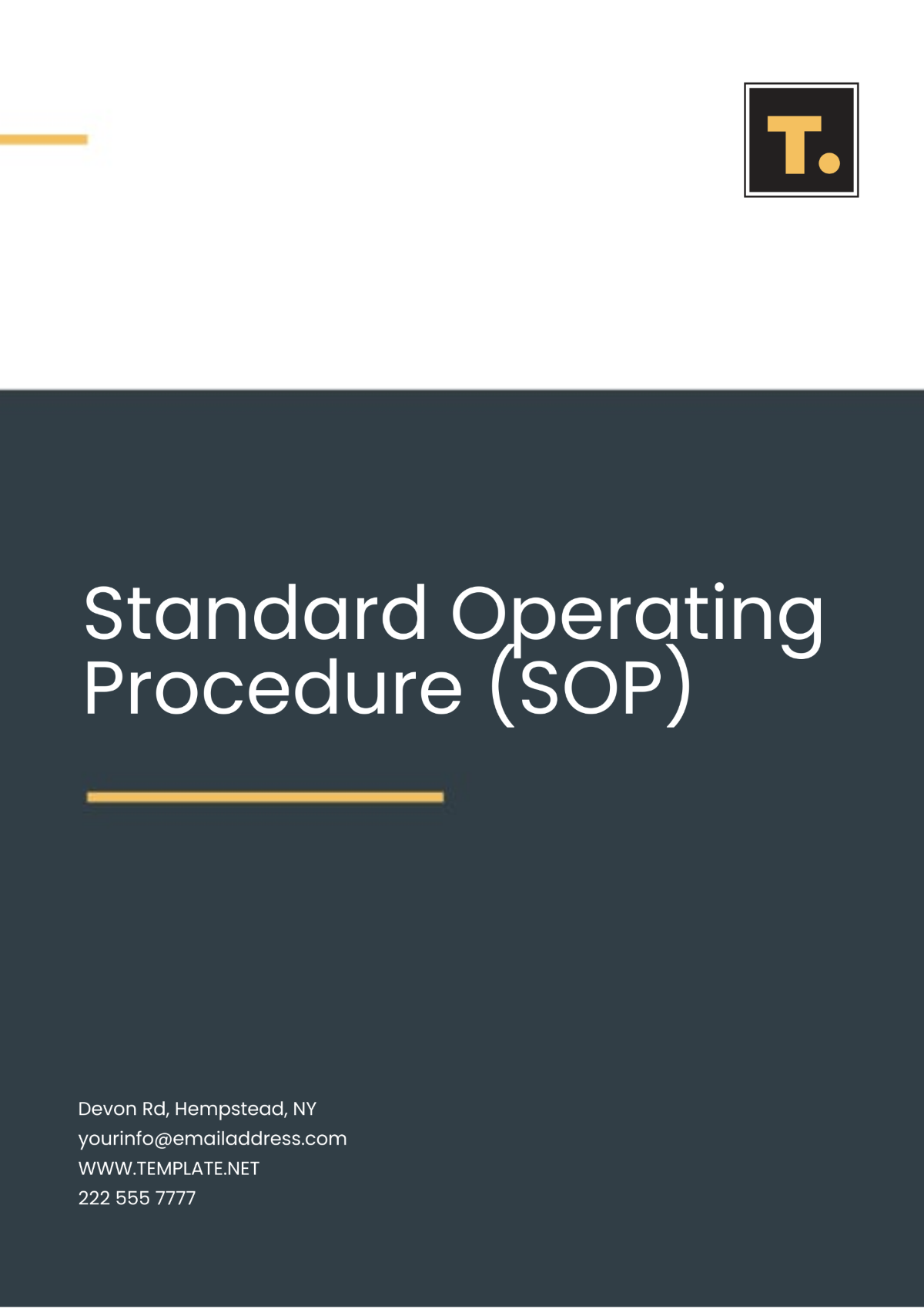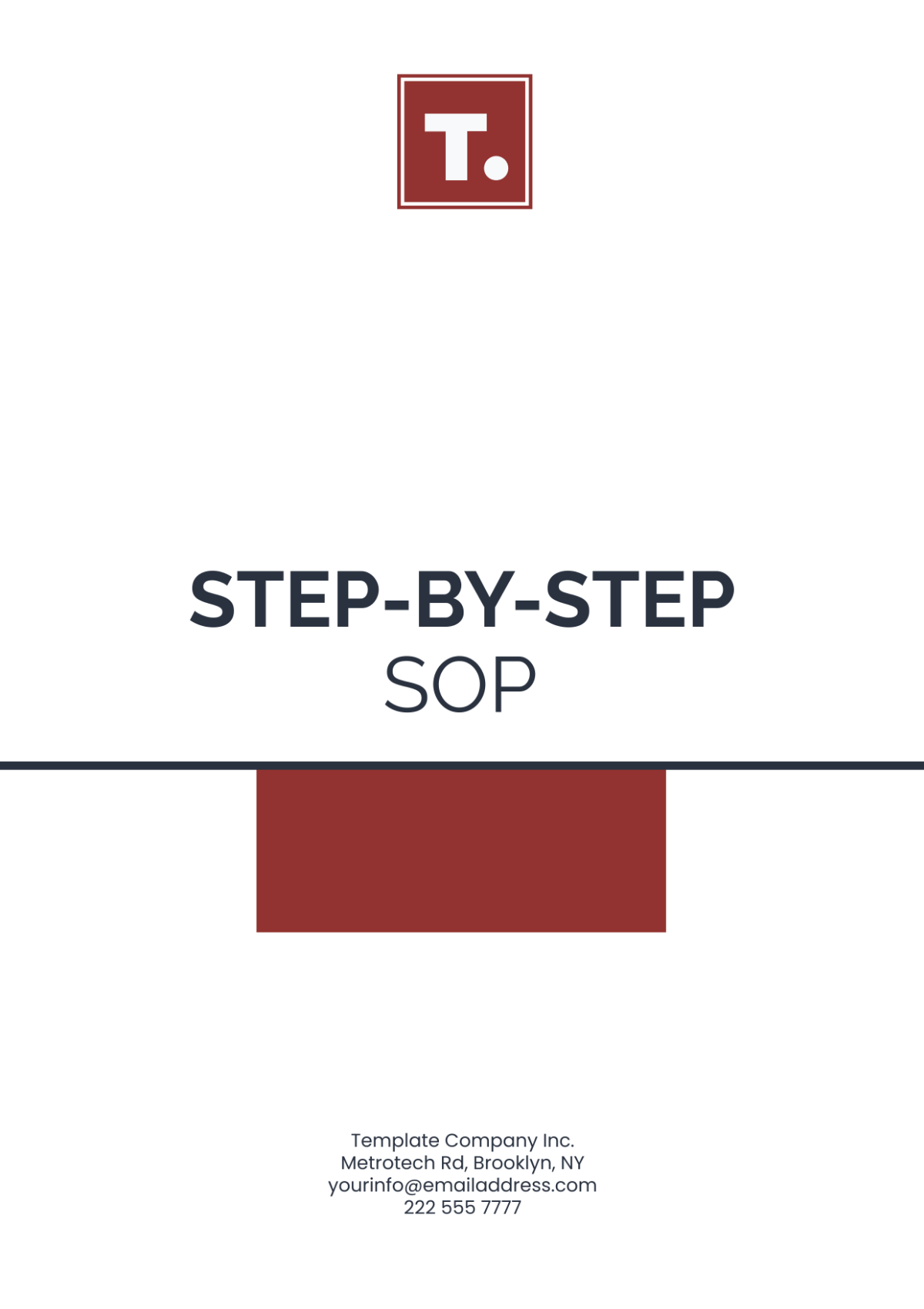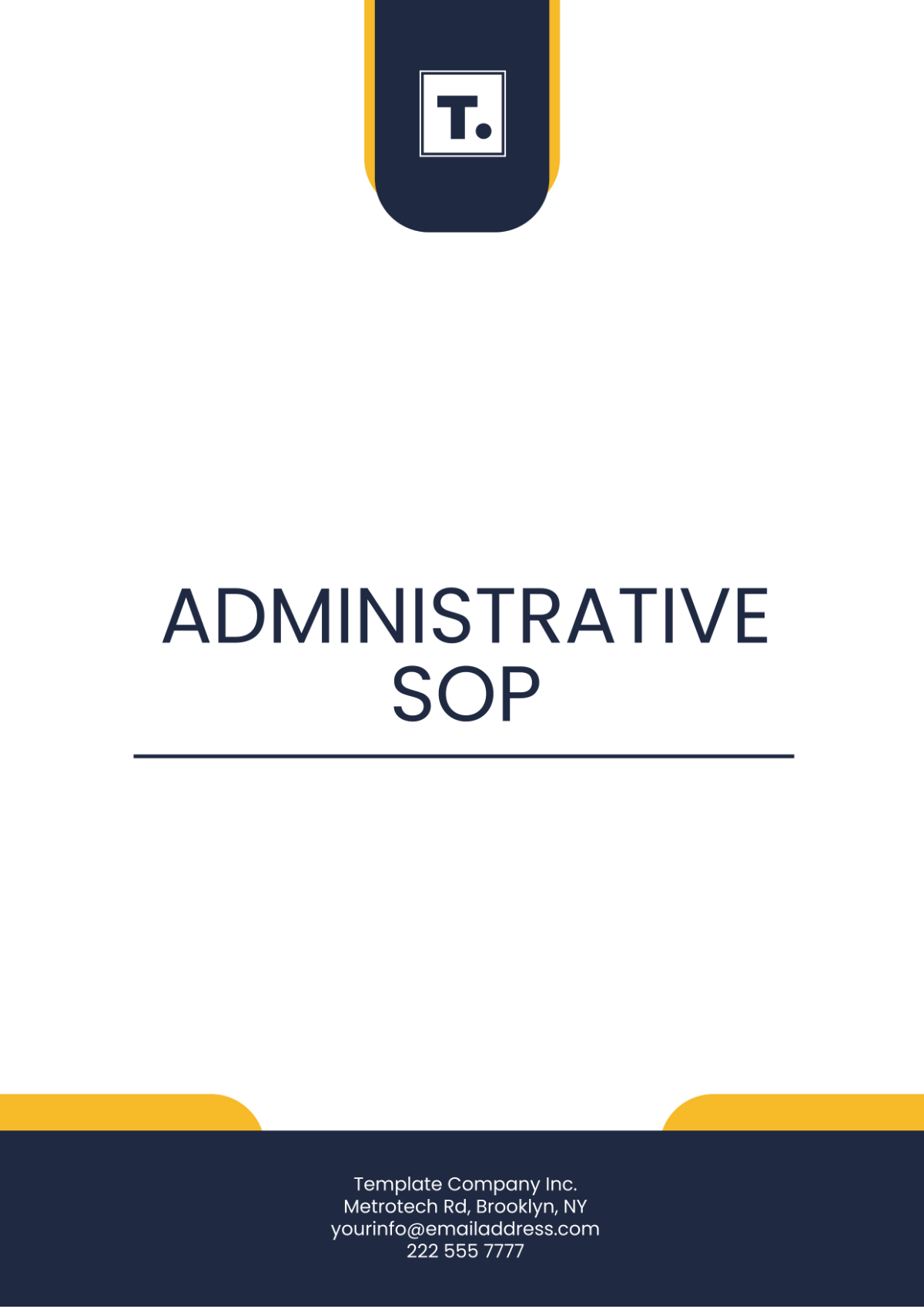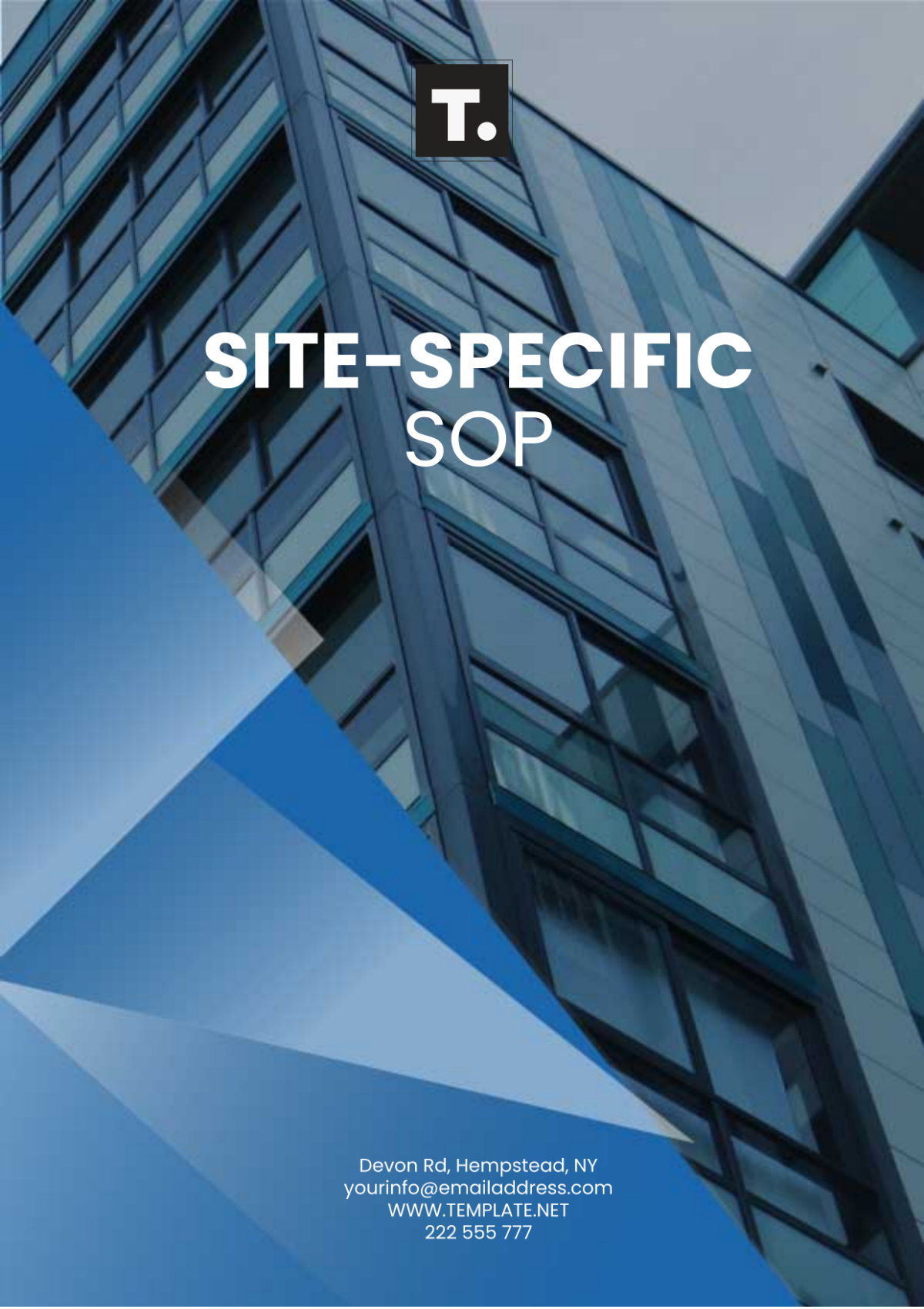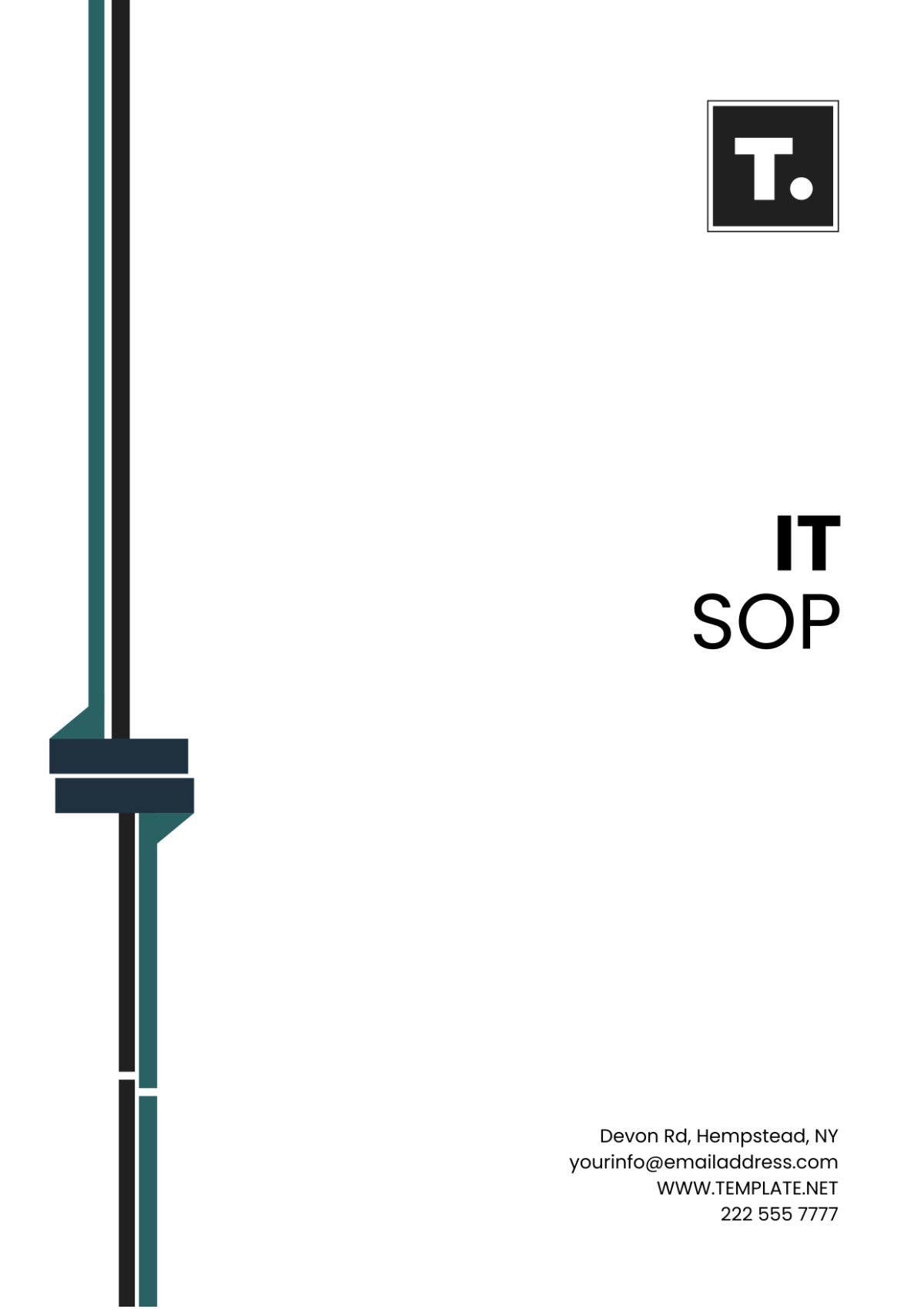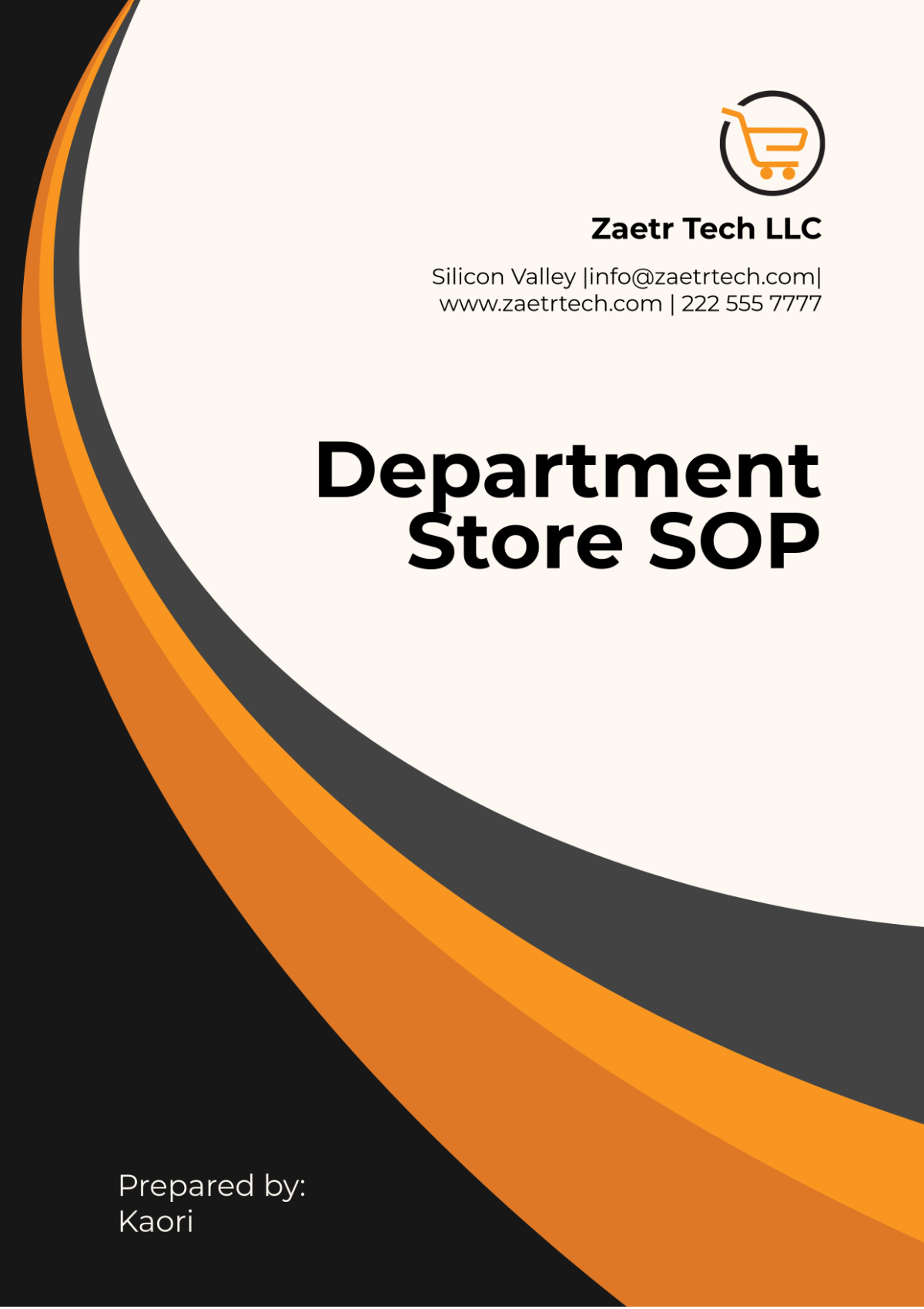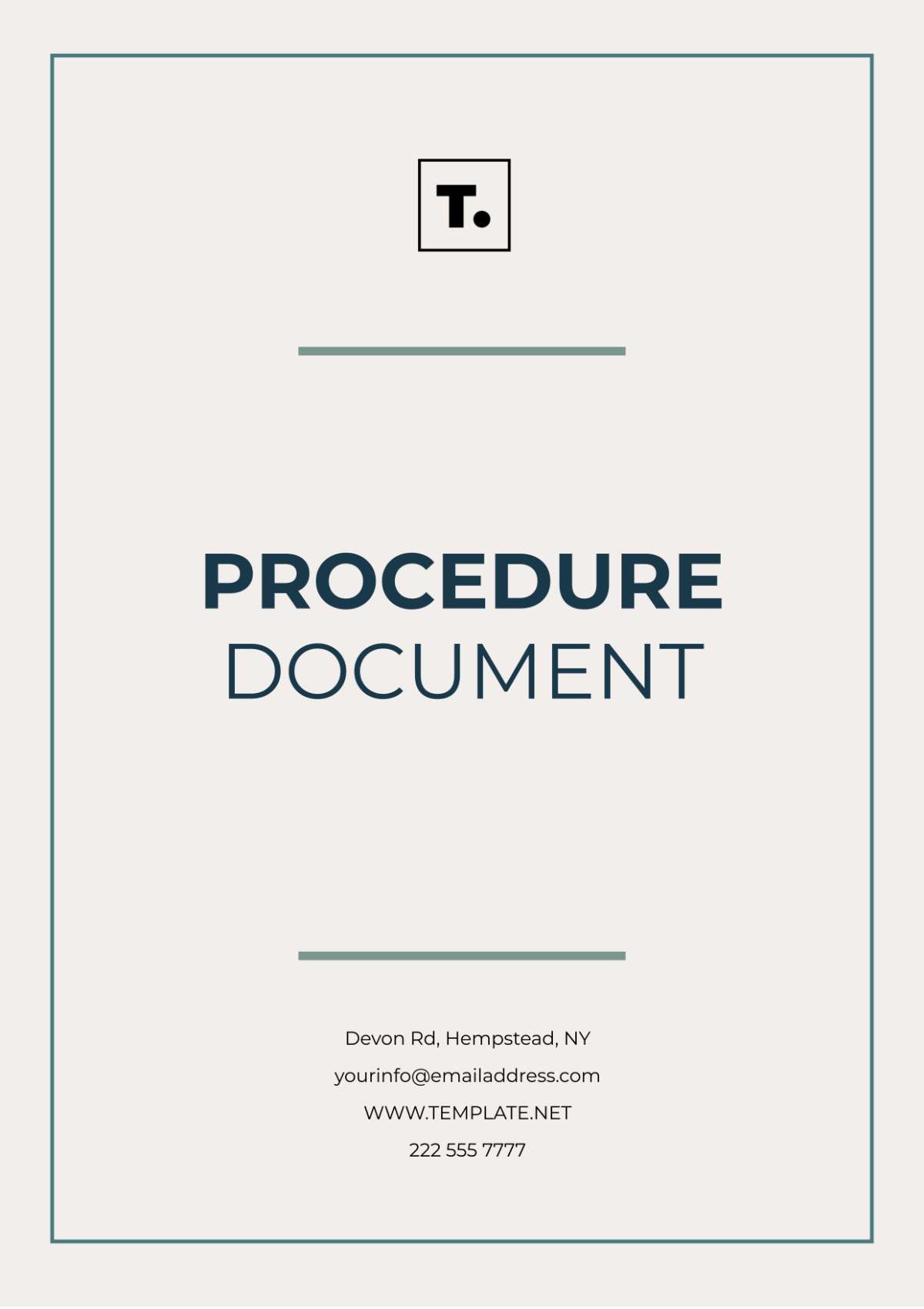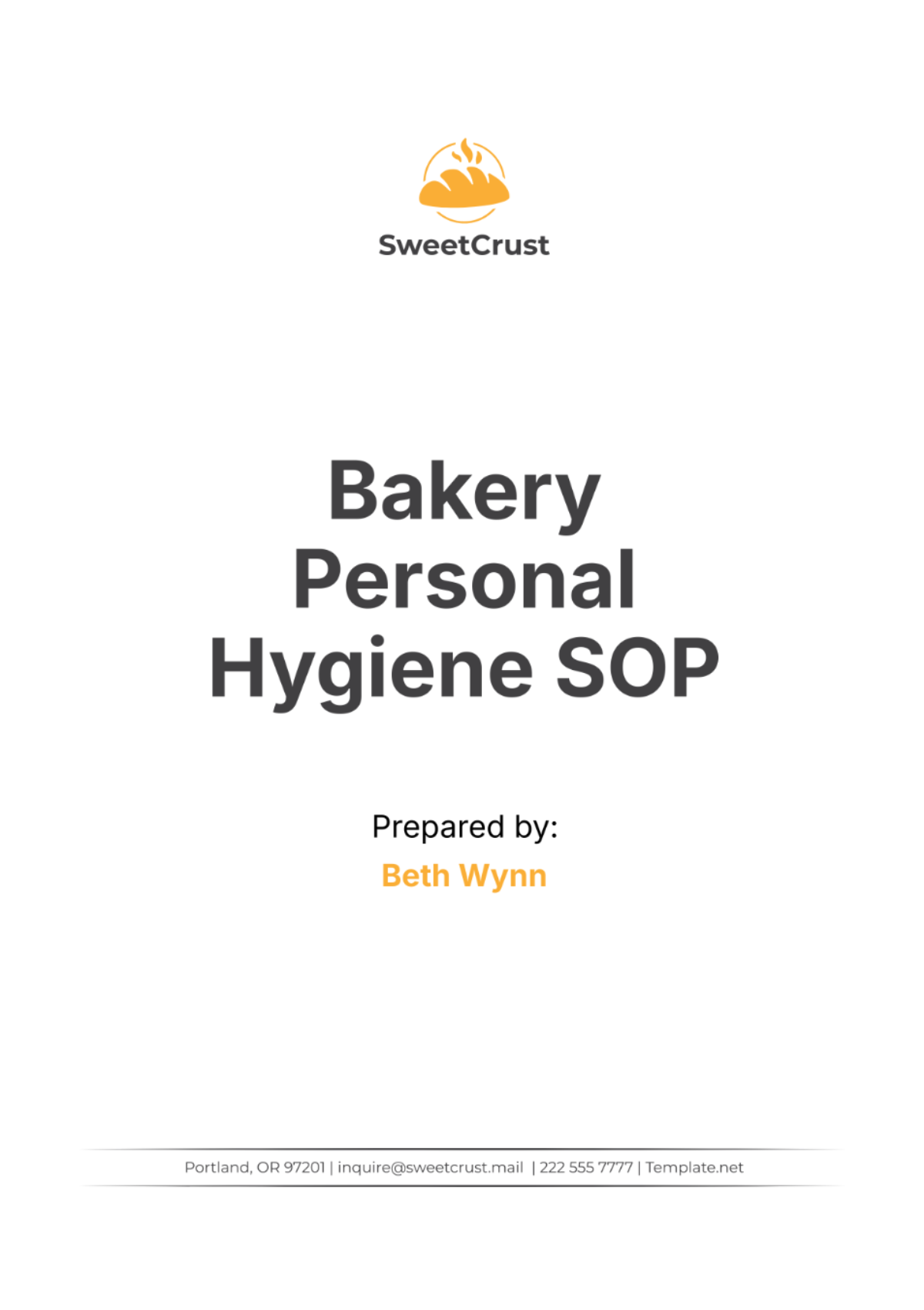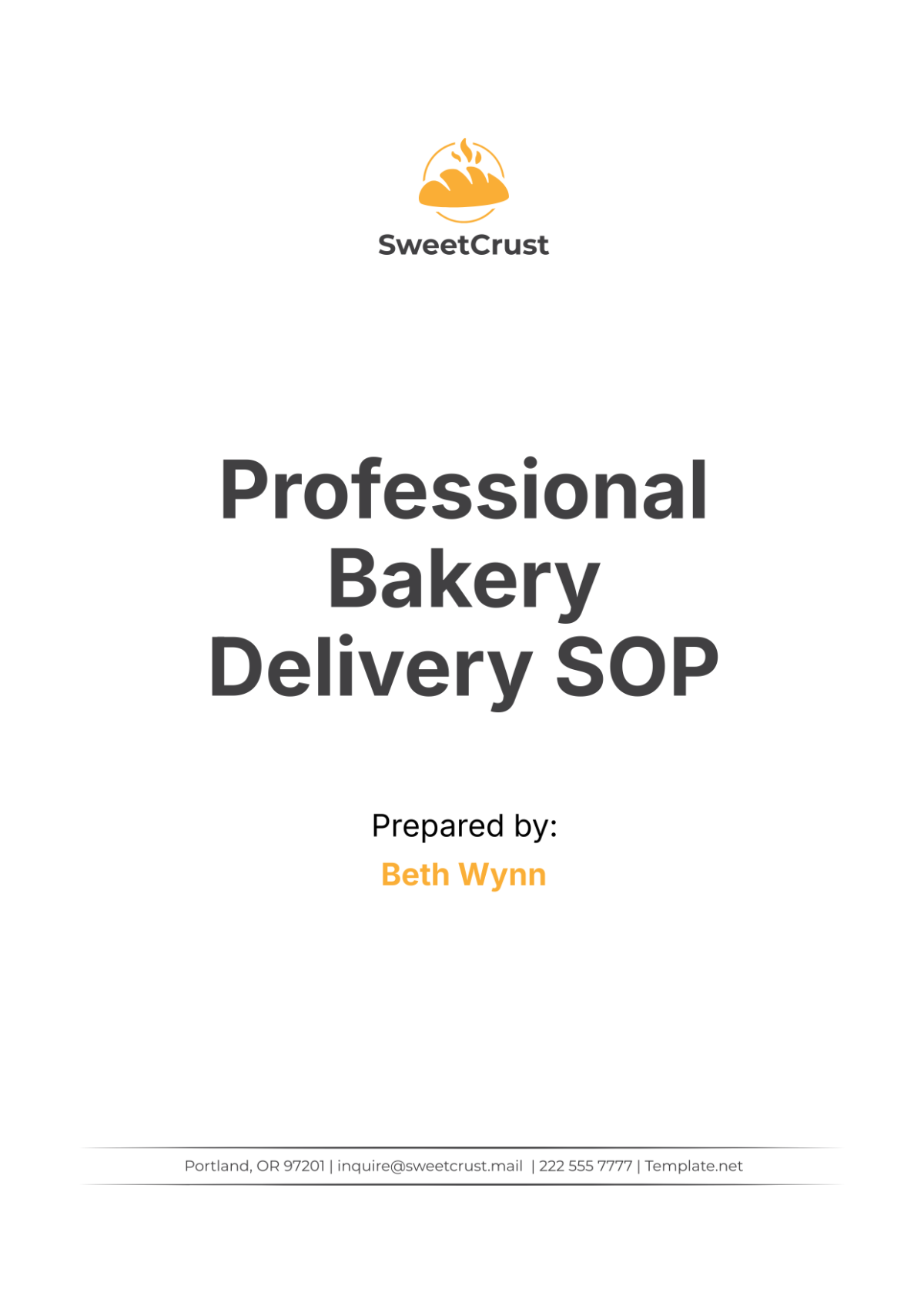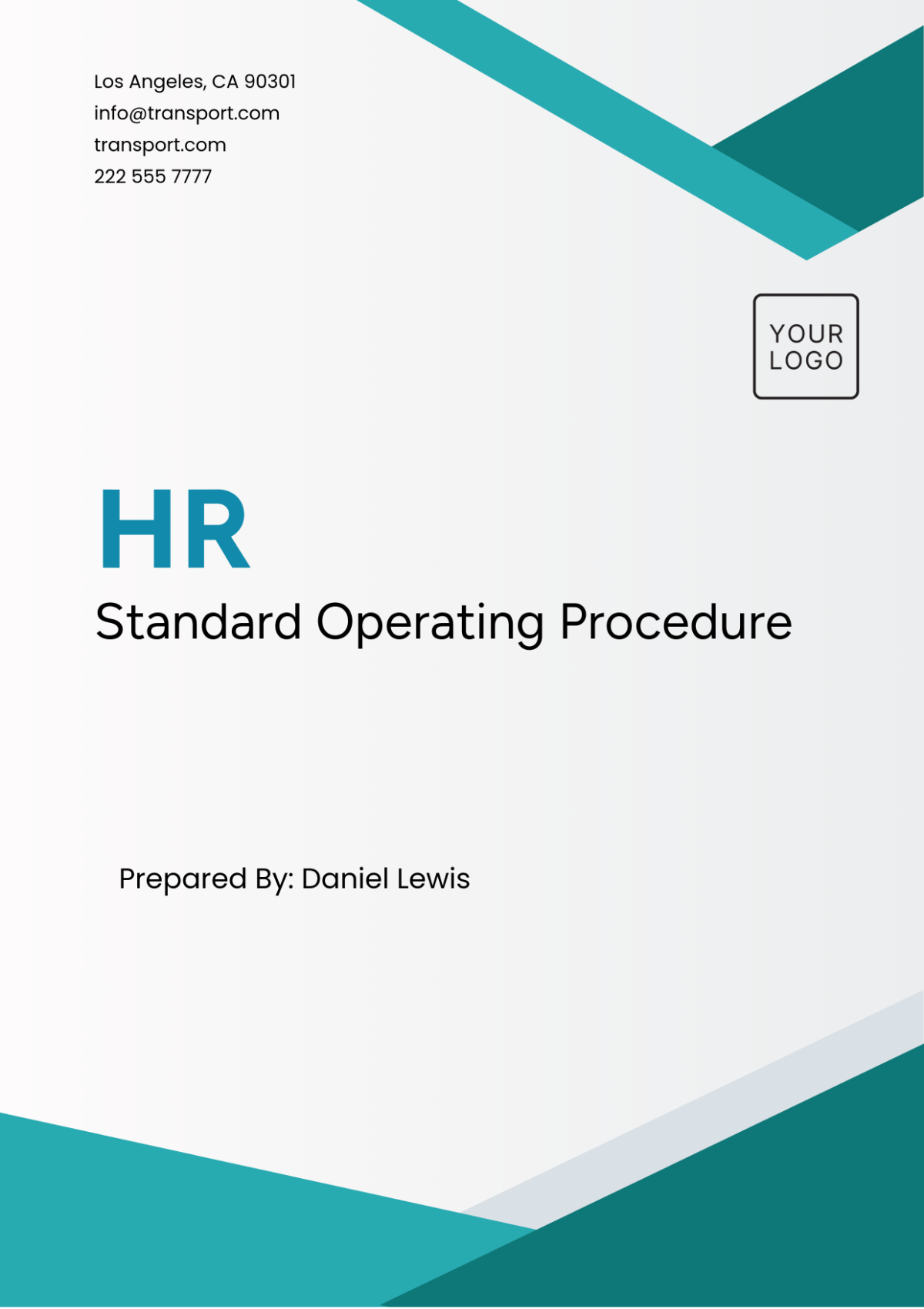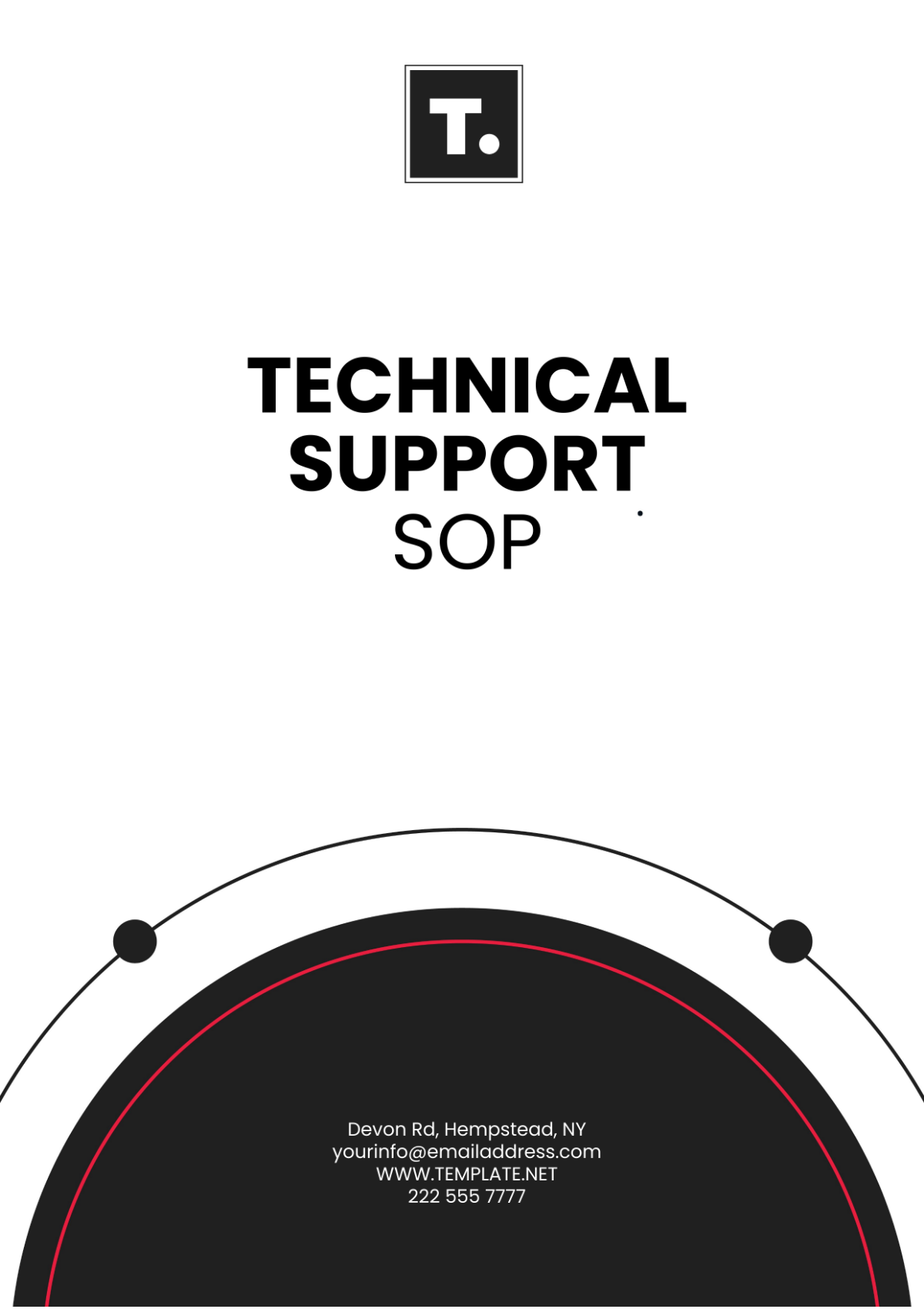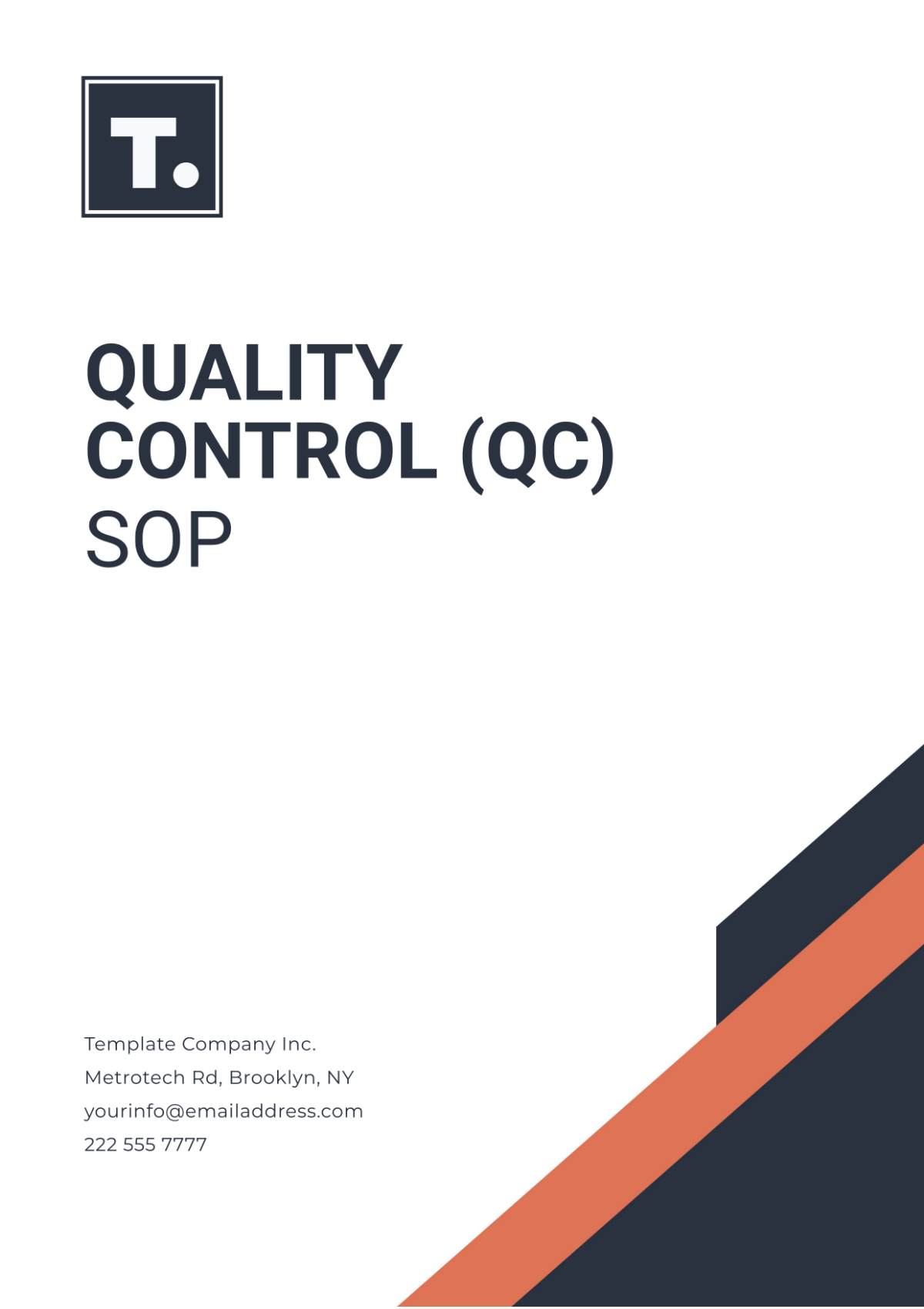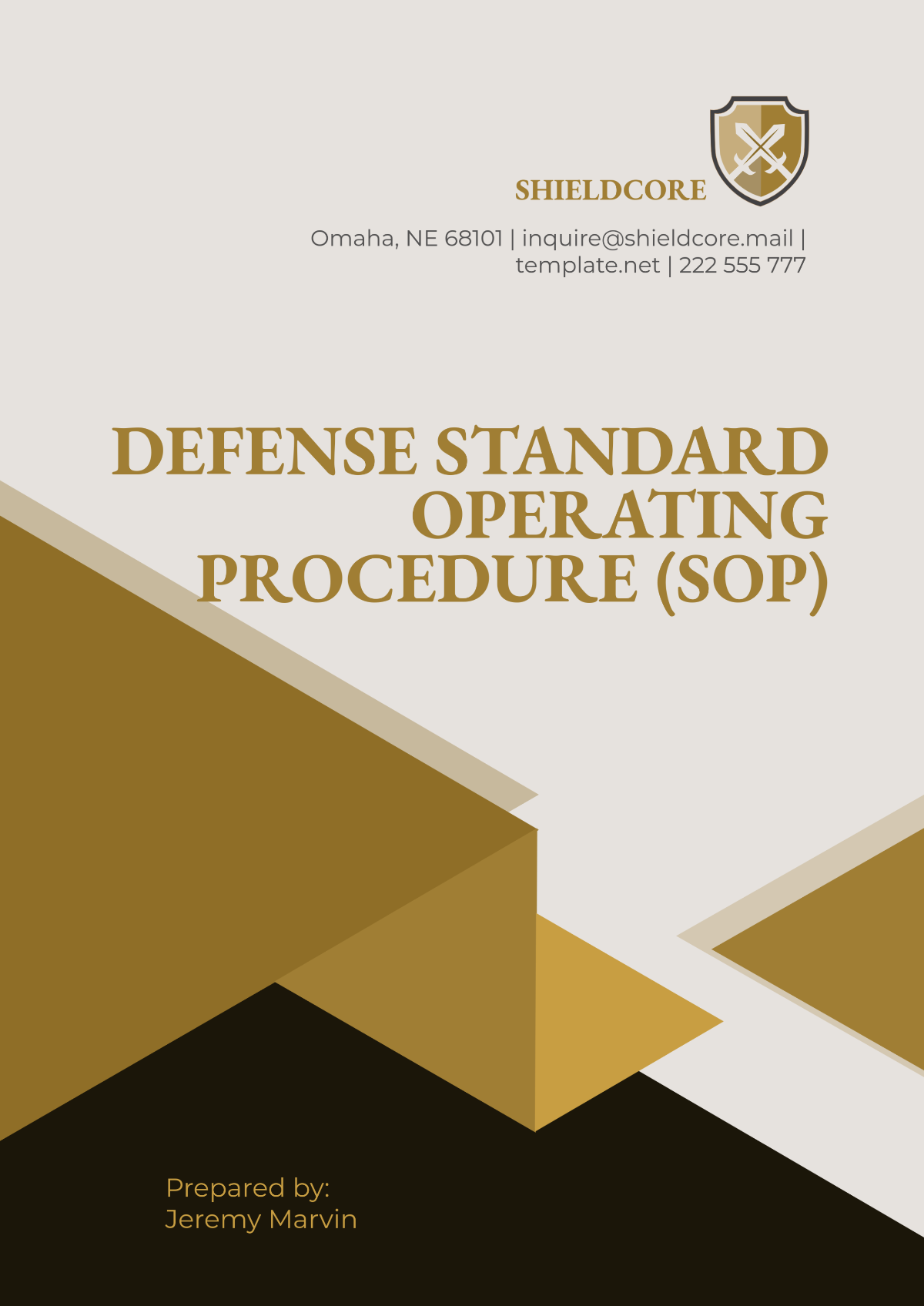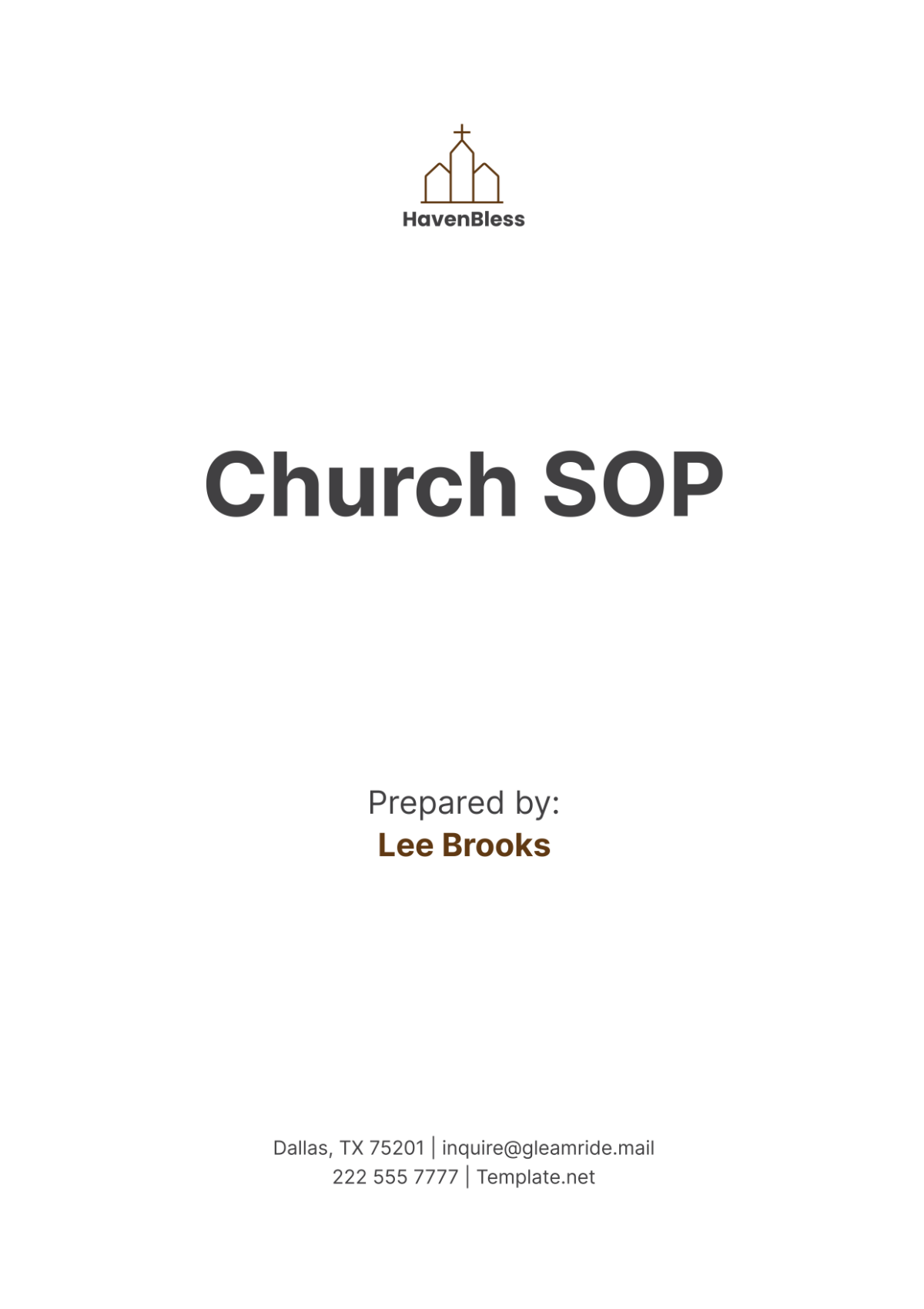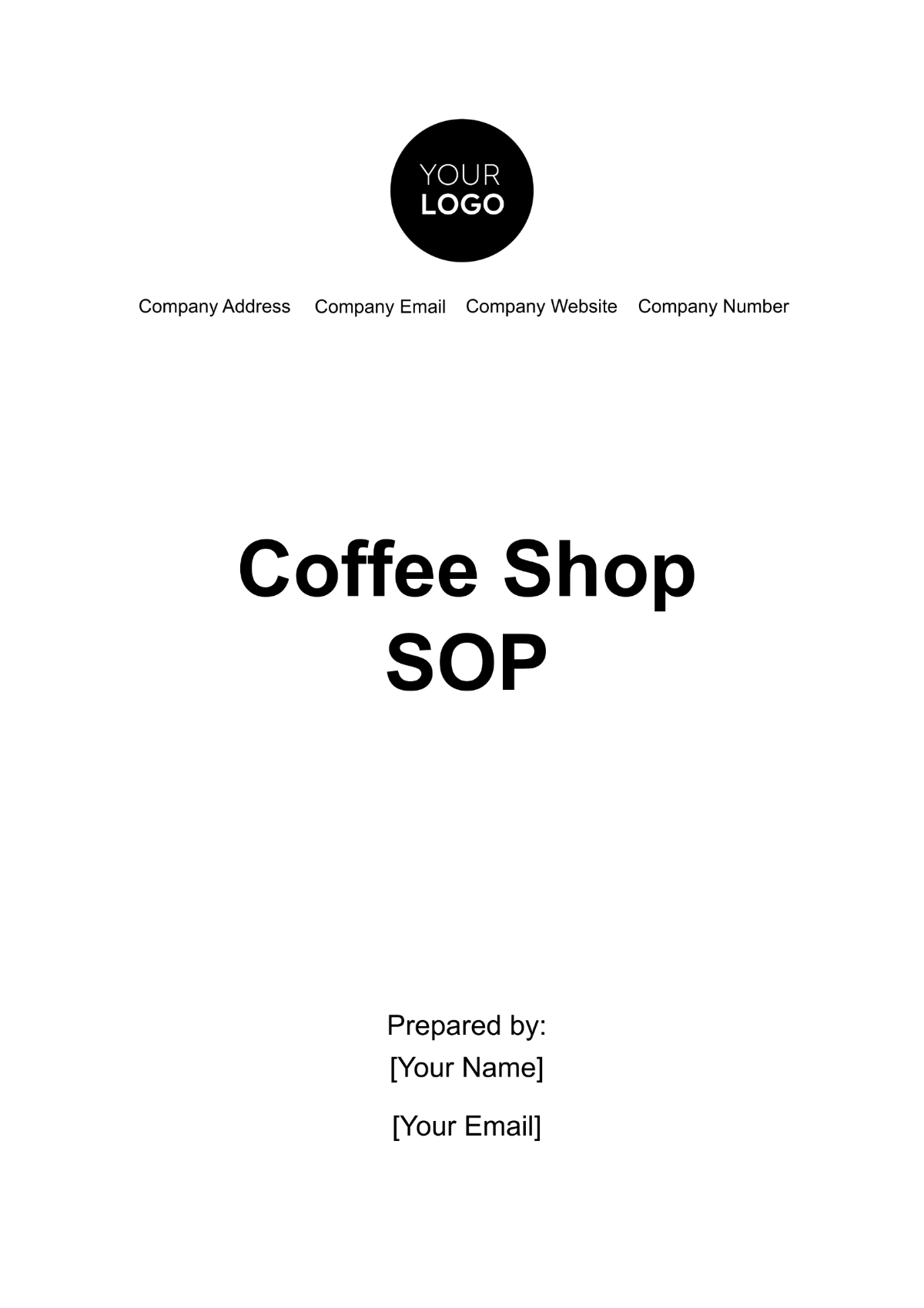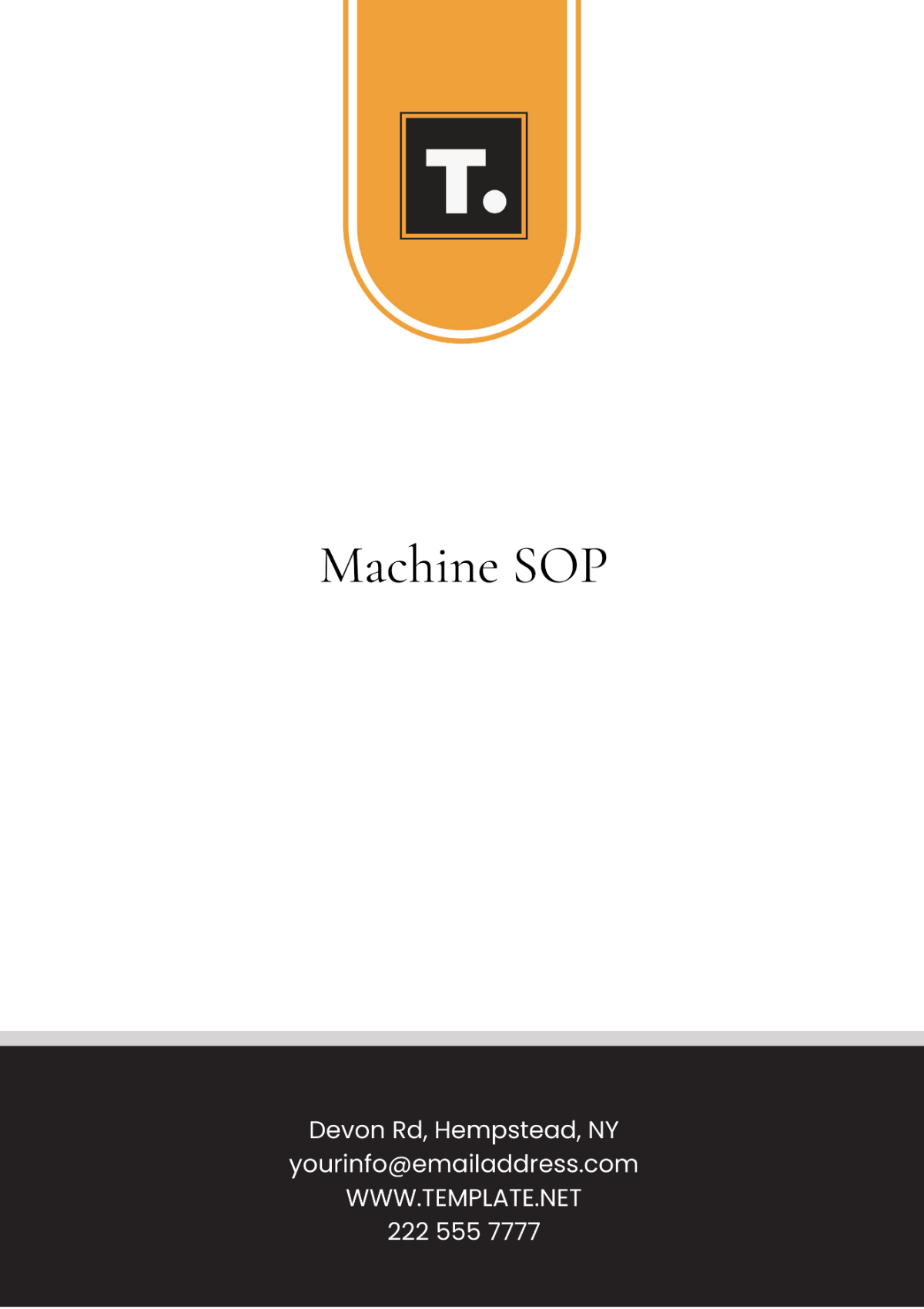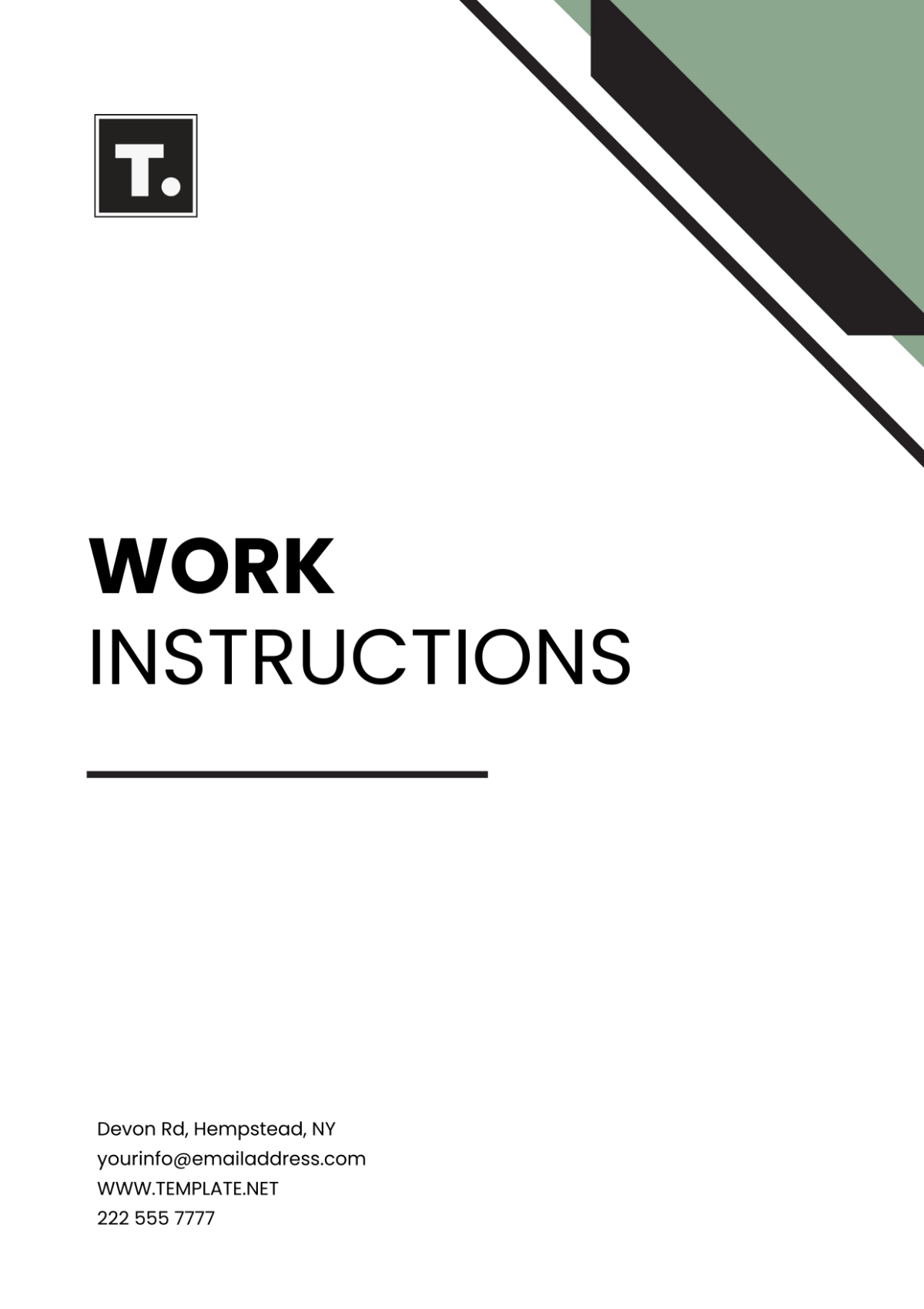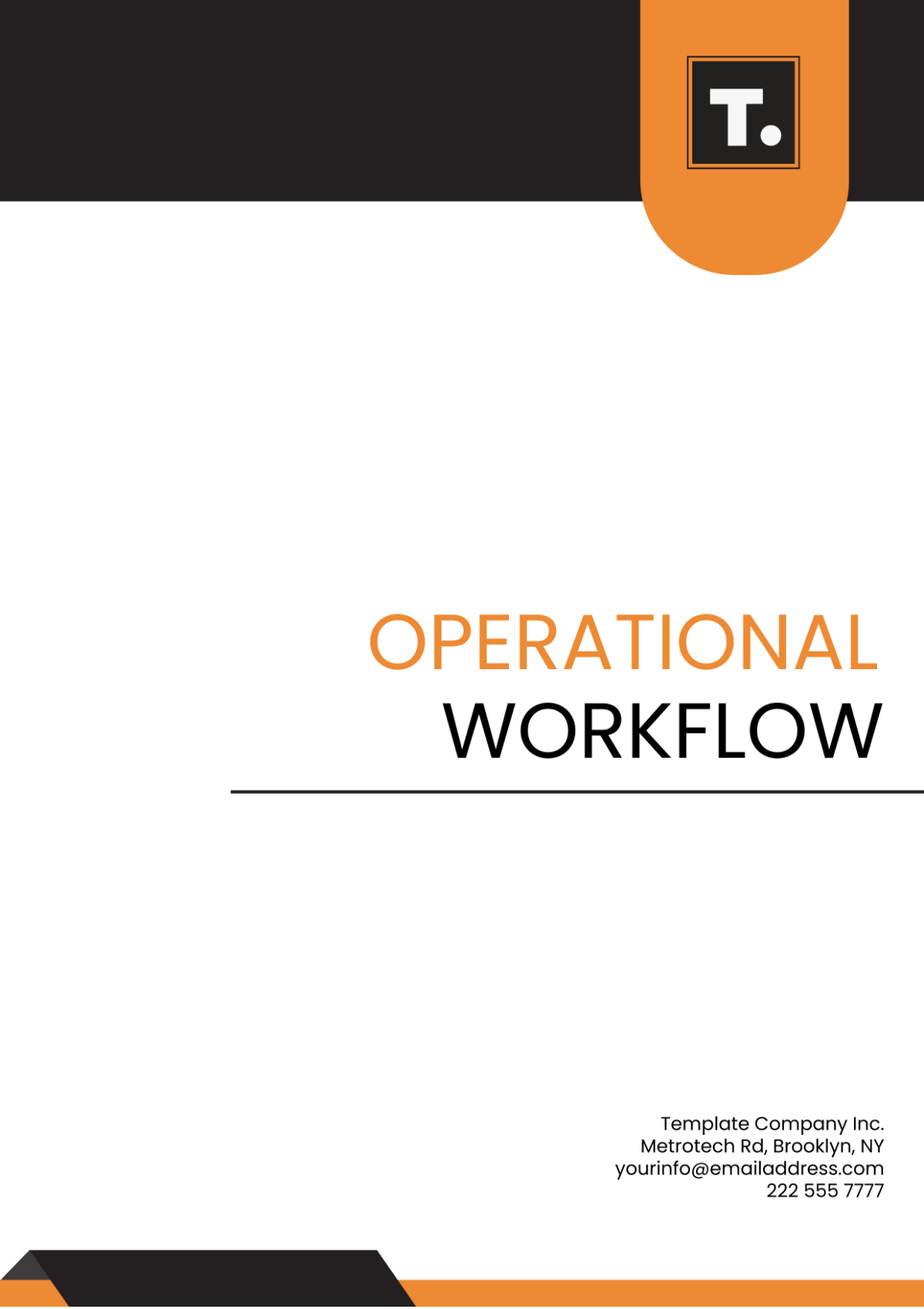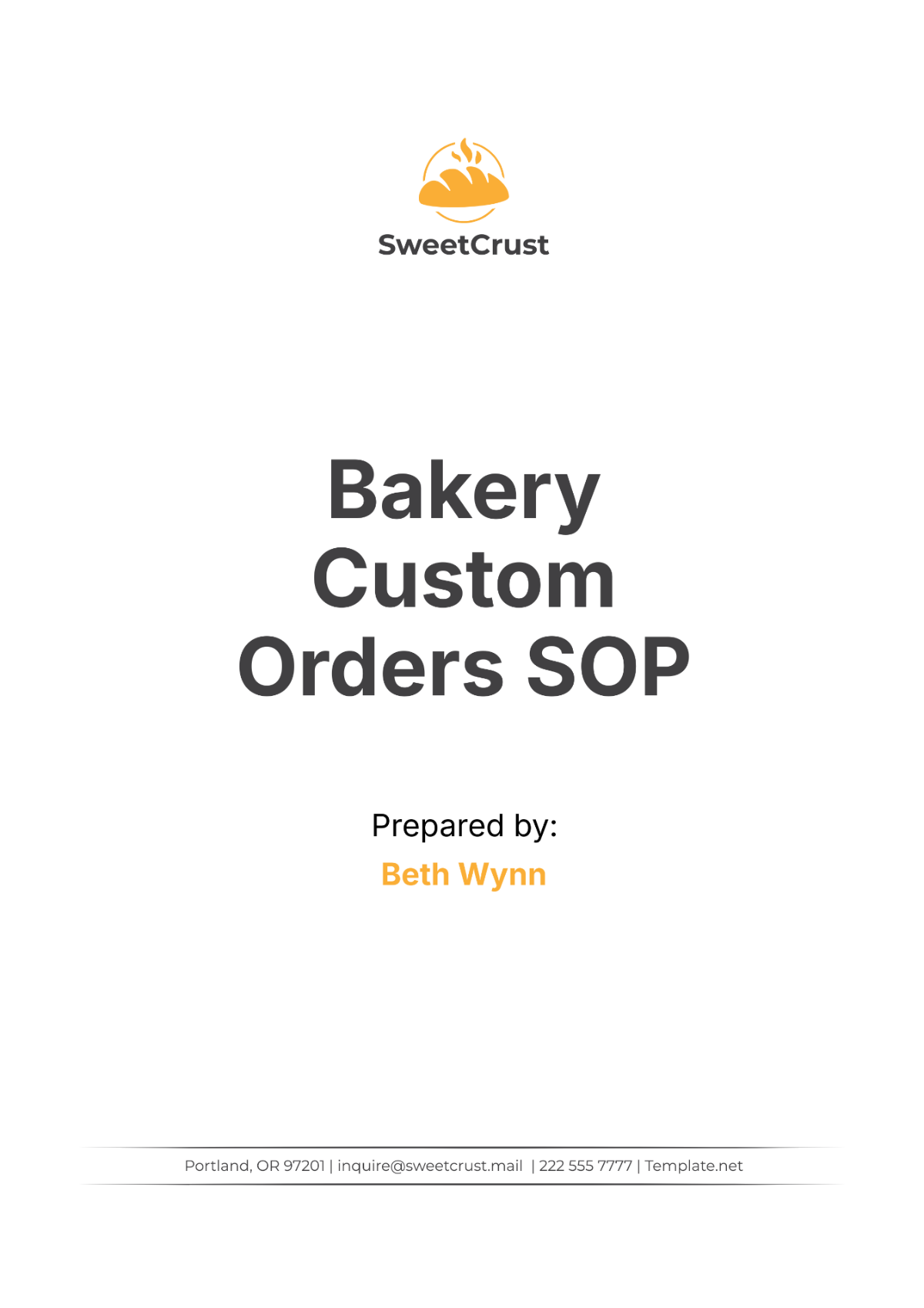Professional Bakery Delivery SOP
I. Introduction
A. Purpose
The purpose of this Standard Operating Procedure (SOP) is to detail the systematic approach [Your Company Name] adopts to ensure the efficient, safe, and high-quality delivery of bakery products. This SOP serves as a guide for all employees involved in the delivery process, ensuring that each stage, from order processing to final delivery, is handled with precision and care. By adhering to these guidelines, [Your Company Name] aims to maintain the highest standards of product quality and customer satisfaction, thereby reinforcing our reputation as a leading bakery.
B. Scope
This SOP applies to all operational aspects of bakery delivery, including order processing, packaging, vehicle preparation, and delivery execution. It is intended for use by Bakery Managers, Delivery Staff, and the Quality Control Team at [Your Company Name]. The procedures outlined herein are designed to address every facet of the delivery process, ensuring that all bakery products are delivered in optimal condition and within the agreed timeframe.
C. Definitions
Bakery Manager: The individual responsible for overseeing bakery operations, including the coordination and management of the delivery process. This role includes ensuring that all deliveries are executed according to the established procedures and standards.
Delivery Staff: Employees tasked with the physical transportation of bakery products from the bakery to the customer. They are responsible for handling products carefully and ensuring timely delivery.
Quality Control Team: A specialized team responsible for inspecting bakery products before they are packaged and dispatched for delivery. This team ensures that all products meet the company’s quality standards and are free from defects.
II. Roles and Responsibilities
A. Bakery Manager
Coordination: The Bakery Manager plays a crucial role in coordinating the delivery process. This includes scheduling delivery times, organizing delivery routes, and ensuring that all orders are prepared and dispatched according to the customer’s requirements. The Manager also liaises with other departments to ensure smooth operation and timely dispatch of orders.
Supervision: Supervises delivery staff to ensure compliance with company policies and procedures. This involves monitoring their performance, addressing any issues that arise during the delivery process, and providing support as needed.
Communication: Acts as the primary point of contact between the bakery and delivery staff, facilitating clear and effective communication. This role involves providing updates on order status, addressing any concerns raised by delivery staff, and ensuring that all stakeholders are informed of any changes or issues.
B. Delivery Staff
Timely Delivery: Delivery Staff are responsible for ensuring that all deliveries are made on time. This involves adhering to scheduled delivery routes, managing time effectively, and making adjustments as necessary to accommodate unforeseen delays.
Product Handling: Handles bakery products with care to prevent damage and maintain quality. This includes ensuring that products are transported in appropriate packaging and that any necessary temperature controls are maintained throughout the delivery process.
Customer Interaction: Engages with customers in a professional and courteous manner. This includes confirming delivery details upon arrival, addressing any concerns or special instructions provided by the customer, and providing excellent customer service to enhance the overall delivery experience.
C. Quality Control Team
Inspection: Conducts thorough inspections of bakery products before they are packaged for delivery. This involves checking for quality issues such as damage, spoilage, or inconsistencies, and ensuring that products meet the company’s quality standards.
Documentation: Maintains detailed records of inspection results, including any issues identified and actions taken. This documentation is essential for tracking quality issues and making improvements to the production process.
Feedback: Provides feedback to the bakery production team based on inspection results. This feedback is used to identify recurring quality issues, implement corrective actions, and support continuous improvement in product quality.
III. Preparation for Delivery
A. Order Processing
1. Receiving Orders
Order Channels: Orders can be received through various channels, including phone, email, online ordering systems, or in-person requests at the bakery. Each channel requires specific handling procedures to ensure that orders are recorded accurately and efficiently.
Order Logging: All received orders must be logged into the bakery’s order management system immediately. This system should capture essential details such as order number, customer information, delivery address, and product details.
Verification: Orders are verified for completeness and accuracy before proceeding to the next step. This includes checking that all items are included, quantities are correct, and any special instructions are noted.
2. Confirming Orders
Customer Confirmation: Contact the customer to confirm order details, including delivery address, preferred delivery time, and any special instructions. This step helps to prevent misunderstandings and ensures that the delivery meets the customer’s expectations.
Order Confirmation Receipt: Provide the customer with an order confirmation receipt via their preferred communication method. This receipt serves as proof of the order and includes details such as order number, items purchased, and estimated delivery time.
Final Check: Conduct a final check to ensure all order details are accurate before processing. This includes verifying that the correct products are prepared and that all necessary packaging materials are available.
B. Packaging
1. Packaging Materials
Selection: Choose appropriate packaging materials that ensure product integrity during transport. This includes selecting boxes, wrappers, and protective materials that are suitable for the type of bakery products being delivered. The materials should provide adequate protection against damage and contamination.
Quality: Ensure packaging materials are of high quality and food-grade to prevent contamination and maintain freshness. Packaging should be free from defects and meet all relevant safety and regulatory standards.
2. Packaging Procedure
Hygiene Standards: Follow strict hygiene standards during the packaging process. This includes wearing gloves, hairnets, and other protective gear to prevent contamination. All packaging surfaces and tools should be sanitized regularly to maintain cleanliness.
Labeling: Clearly label each package with the customer’s name, order number, and delivery address. Proper labeling helps to ensure that packages are delivered to the correct location and allows for easy identification during the delivery process.
Sealing: Securely seal packages to prevent spillage or contamination during transit. Use appropriate sealing methods and materials to ensure that packages remain intact and that products are protected throughout the delivery process.
C. Vehicle Preparation
1. Vehicle Inspection
Routine Checks: Conduct routine vehicle inspections to ensure they are in good working condition. This includes checking tires for wear, brakes for functionality, lights for visibility, and fluid levels for proper operation. Regular inspections help to prevent vehicle breakdowns and ensure safe operation.
Cleanliness: Maintain the cleanliness of delivery vehicles to prevent contamination of bakery products. This includes regularly cleaning and sanitizing the interior of the vehicle, especially areas where products are stored.
2. Loading the Vehicle
Order Organization: Load orders into the vehicle in the sequence of the delivery route to minimize unloading time. This helps to streamline the delivery process and ensures that packages are easily accessible during deliveries.
Secure Placement: Ensure all packages are securely placed to prevent shifting or damage during transit. Use appropriate restraints or securing methods to keep packages stable and protect them from impact.
Temperature Control: If necessary, use temperature-controlled compartments to maintain the freshness of perishable items. This includes using refrigerated or heated compartments as required to keep products at the appropriate temperature.
IV. Delivery Process
A. Route Planning
1. Route Optimization
Mapping: Use mapping software to plan the most efficient delivery route. Consider factors such as distance, traffic conditions, and delivery time windows to optimize the route and minimize travel time.
Multiple Deliveries: Group deliveries geographically to minimize travel time and fuel consumption. Efficient route planning helps to reduce costs and improve overall delivery efficiency.
2. Traffic Considerations
Traffic Monitoring: Monitor real-time traffic updates to avoid delays. Adjust routes as needed to account for road closures, accidents, or heavy traffic. Keeping abreast of traffic conditions helps to ensure timely deliveries.
Alternate Routes: Have alternate routes planned in case of unexpected road closures or significant traffic delays. Being prepared with backup routes helps to avoid potential delays and ensures that deliveries are made on time.
B. Delivery Execution
1. Safe Driving Practices
Speed Limits: Adhere to speed limits and drive safely, especially in residential areas. Observing speed limits helps to prevent accidents and ensures the safety of both the delivery staff and other road users.
Defensive Driving: Practice defensive driving techniques to prevent accidents. This includes being aware of your surroundings, anticipating potential hazards, and maintaining a safe distance from other vehicles.
Vehicle Handling: Handle the delivery vehicle with care to avoid sudden stops or sharp turns that could damage the bakery products. Smooth driving helps to ensure that products remain in good condition during transit.
2. Delivery Confirmation
Customer Contact: Contact the customer upon arrival to confirm the delivery and any special instructions. This helps to ensure that the delivery is made according to the customer’s preferences and allows for any last-minute adjustments.
Verification: Verify the delivery address and order details with the customer before handing over the package. This step helps to prevent delivery errors and ensures that the correct products are delivered to the right location.
Signature: Obtain the customer’s signature on the delivery receipt to confirm successful delivery. The signature serves as proof of delivery and helps to resolve any disputes or issues that may arise.
C. Handling Issues
1. Delays
Communication: Inform customers of any anticipated delays as soon as possible. Provide an updated estimated time of arrival and offer apologies for any inconvenience caused. Effective communication helps to manage customer expectations and maintain satisfaction.
Documentation: Record the reason for the delay and any actions taken to resolve it. Documenting delays helps to identify patterns and make improvements to the delivery process.
2. Customer Complaints
Listening: Listen to customer complaints attentively and address their concerns professionally. Understanding the customer’s perspective and providing empathetic responses helps to resolve issues effectively.
Resolution: Take immediate action to resolve the issue, such as replacing damaged items or offering a discount on future orders. Prompt resolution helps to maintain customer trust and satisfaction.
Reporting: Document the complaint and the resolution for future reference. This documentation is useful for tracking recurring issues and making improvements to the delivery process.
V. Post-Delivery Procedures
A. Unloading and Inspection
1. Returning Unsold Items
Inventory Check: Check returned items against the delivery log to ensure all unsold items are accounted for. This helps to prevent losses and ensures accurate inventory records.
Storage: Properly store returned items to maintain their quality and freshness for future sales. Follow appropriate storage procedures to prevent spoilage and ensure that products are ready for resale.
2. Inspecting Returned Items
Quality Check: Inspect returned items for any signs of damage or spoilage. Assess the condition of each item and determine if it can be repackaged or needs to be disposed of.
Documentation: Document the condition of returned items and any actions taken, such as disposal or repackaging. Accurate documentation helps to track inventory and make informed decisions about product quality.
B. Documentation
1. Delivery Logs
Record Keeping: Maintain detailed delivery logs that include order details, delivery times, customer signatures, and any issues encountered. Comprehensive records are essential for tracking delivery performance and addressing any problems that arise.
Review: Regularly review delivery logs to identify patterns or recurring issues. Analyzing log data helps to identify areas for improvement and make adjustments to the delivery process.
2. Reporting Issues
Issue Log: Maintain a log of delivery-related issues, including delays, customer complaints, and product damages. This log serves as a reference for addressing problems and implementing corrective actions.
Follow-Up: Follow up on reported issues to ensure they are resolved and take steps to prevent recurrence. Ongoing follow-up helps to improve the overall delivery process and enhance customer satisfaction.
VI. Quality Control
A. Inspection Standards
Consistency: Establish and follow consistent inspection standards for all bakery products before delivery. Consistent standards ensure that all products meet the company’s quality requirements and provide a uniform customer experience.
Checkpoints: Implement multiple checkpoints during the preparation and packaging process to identify and rectify quality issues early. Regular checkpoints help to catch any problems before products are dispatched for delivery.
B. Quality Assurance Protocols
Testing: Conduct regular quality assurance tests to verify the freshness and taste of bakery products. Testing helps to ensure that products meet the company’s quality standards and are free from defects.
Feedback Loop: Create a feedback loop with the bakery production team to continuously improve product quality based on inspection results. The feedback loop allows for ongoing improvements and helps to address any quality issues promptly.
VII. Health and Safety
A. Hygiene Practices
Sanitization: Ensure all delivery staff follow strict sanitization practices, including handwashing and using sanitizers. Regular sanitization helps to prevent contamination and maintain food safety standards.
Protective Gear: Require delivery staff to wear protective gear, such as gloves and masks, especially when handling food products. Protective gear helps to prevent contamination and ensures the safety of both the products and the staff.
B. Safety Regulations
Compliance: Ensure all delivery operations comply with local and national health and safety regulations. Compliance with regulations helps to maintain a safe working environment and avoid potential legal issues.
Training: Provide regular training to delivery staff on health and safety practices, including emergency procedures. Ongoing training helps to keep staff informed and prepared for any safety-related situations.
VIII. Continuous Improvement
A. Feedback Collection
Customer Feedback: Collect feedback from customers on their delivery experience through surveys or direct communication. Gathering customer feedback provides valuable insights into the delivery process and helps identify areas for improvement.
Staff Feedback: Encourage delivery staff to provide feedback on the delivery process and suggest improvements. Staff feedback helps to identify practical issues and make enhancements based on their experiences.
B. Process Review and Updates
Regular Review: Conduct regular reviews of the delivery process to identify areas for improvement. Review the SOP periodically to ensure it remains current and effective in addressing any issues that arise.
SOP Updates: Update this SOP based on feedback and process reviews to ensure it reflects the latest best practices and industry standards. Regular updates help to maintain the effectiveness of the SOP and support continuous improvement.
IX. Training and Development
A. Staff Training Programs
Initial Training: Provide comprehensive initial training for new delivery staff, covering all aspects of the delivery process. Initial training should include detailed instructions on order processing, packaging, vehicle preparation, and delivery execution.
Refresher Courses: Offer periodic refresher courses to keep delivery staff updated on best practices and new procedures. Refresher courses help to reinforce knowledge and ensure that staff remain proficient in their roles.
B. Ongoing Education
Workshops: Organize workshops on topics such as customer service, safe driving practices, and quality control. Workshops provide opportunities for staff to learn new skills and stay current with industry trends.
Certifications: Encourage delivery staff to obtain relevant certifications that enhance their skills and knowledge. Certifications can improve staff expertise and contribute to the overall quality of the delivery process.
